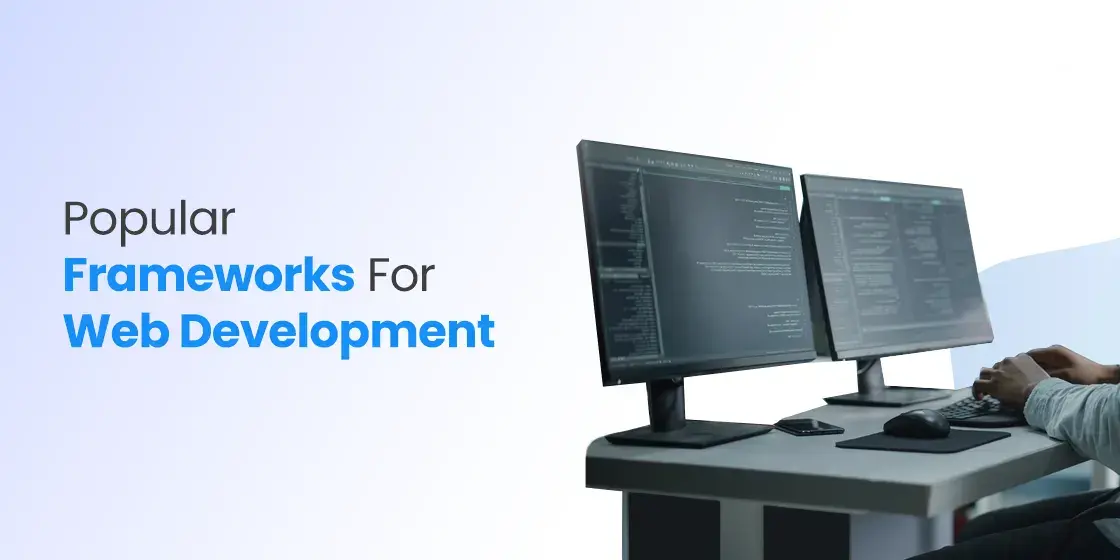Table of Content
Discover Popular Web Development Frameworks Choose the Right Tool for Your Project
Building modern web applications without frameworks is like constructing a skyscraper with hand tools—technically possible, but unnecessarily difficult and time-consuming. With over 2 million websites using React alone and framework adoption rates soaring by 35% year-over-year, choosing the right web development framework has become more crucial than ever.
Whether you’re a startup looking to move fast or an enterprise building complex applications, this comprehensive guide breaks down the most powerful web development frameworks shaping 2025, complete with performance metrics, real-world use cases, and expert selection criteria.
In this article, we will answer these burning questions in detail from the perspective of professional web development services. Let us first start from the basics understanding the core definition of web development framework below.
What is a Web Development Framework?

Web development framework refers to an environment where developers build an application. It can be termed as a platform where you get all the tools, functions and features to build a customized website. Earlier, when the dev field was in a nascent stage, there were no platforms or complete environments available for developers. People had to use different tools and technologies separately to build a custom application. This was the reason why the development process was a bit long, requiring separate efforts from the scratch at every stage.
To resolve this issue, web frameworks were introduced in the market with different prebuilt features. It described the idea how different development tasks can be done cohesively to save plenty of time and efforts. The introduction of different JavaScript frameworks precisely set the tone for developing modern web applications with better efficiency. That is how these frameworks got popularity in the market, offering developers a more organized way to create powerful web apps.
What Makes a Web Development Framework Essential in 2025?
A web development framework serves as your development foundation—a pre-built collection of tools, libraries, and conventions that eliminate repetitive coding tasks. Think of it as having a fully-equipped workshop instead of starting with raw materials every time you build something.
Modern frameworks handle everything from routing and state management to security protocols and performance optimization. They’ve evolved far beyond simple code libraries into sophisticated ecosystems that can determine your project’s success or failure.
The Current Landscape: What’s Changed
The framework ecosystem has undergone dramatic shifts since 2024. AI-powered development tools like GitHub Copilot are now integrated into most frameworks, edge computing capabilities are standard, and support for PWA vs native apps has become table stakes.
Performance expectations have skyrocketed—users expect sub-second load times, and search engines prioritize Core Web Vitals. This has led to the rise of compile-time optimized frameworks like Svelte and SolidJS, which deliver significantly smaller bundle sizes and faster runtime performance.
Types of Web Development Frameworks
Before picking any web development framework for your project, you need to first understand its classification. There are two types of frameworks currently available in the market. Let’s take a look at them in detail below.
Backend Framework
Backend framework is considered most important environment in the dev world. It is the place where you build a strong platform for your web application. All the functions, features and methods are programmed using the backend framework. It generally requires good technical knowledge, because backend programming is quite hard as compared to frontend scripting. There are different types of coding languages for app development used these days, such as C#, Python, PHP and more others.
All the server-side programming is done on backend frameworks. Whether you want to build/integrate an API or just want to connect the database with the application, you will need to use a backend framework to do the job. It is therefore recommended to the beginners to first learn the concepts of backend framework, as it helps to build their base in core application programming.
Frontend Framework
Once you are done building the backend of the application, you will then move towards the frontend of the app, and that is where specialized frontend frameworks will be required. These platforms are purely built to design the frontend of the web app. From menu to header and sliders to navigation bars, everything is designed using the creative features of a frontend framework. It provides different types of prebuilt functions and templates to design these components, precisely as per the needed demands.
Using the frontend frameworks, web designers can simplify various tasks on the go. Most of the web designers use frameworks to create UI/UX of the website creatively. These platforms provide them plenty of help in website designing, mostly through smart premade functions. These frameworks are basically built with the combination of HTML, CSS and JavaScript, so developers usually find it easy to work with them.
Top Web Development Frameworks Known Today
The dev market has seen immense evolution during the last couple of decades. Today, you can find different types of web development frameworks available in the industry. Some of them are recommended best for development due to various reasons. Let’s take a look at their names below.
Angular
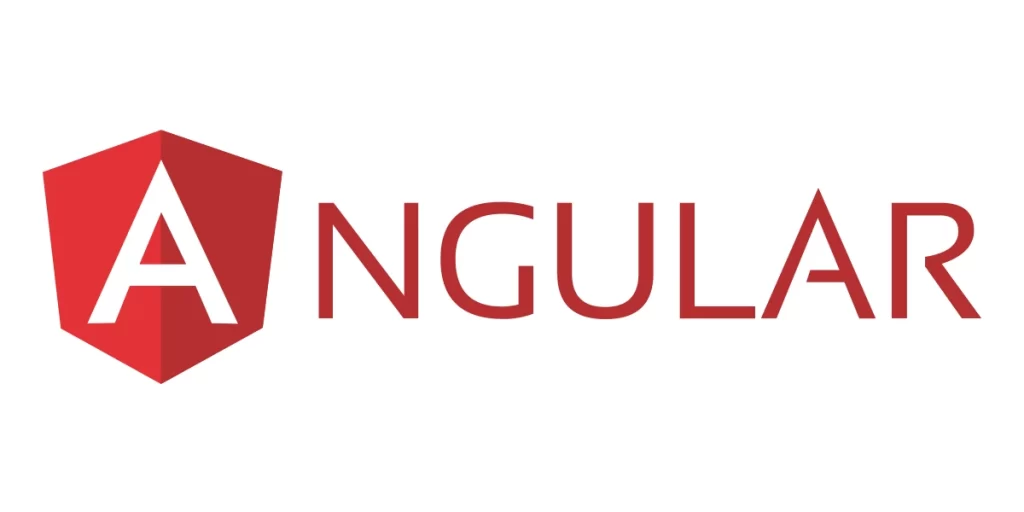
Market Share: Preferred by 65% of enterprise developers
Bundle Size: ~60KB+ (feature-complete out of box)
Performance Score: 8/10
Angular remains the go-to choice for large-scale enterprise applications. Its opinionated architecture and comprehensive tooling create consistency across large development teams.
Enterprise advantages:
- Ivy renderer reduces bundle sizes by 40%
- Module Federation enables micro-frontend architectures
- Built-in dependency injection and testing frameworks
- Strong TypeScript integration from day one
Best for: Enterprise applications, large development teams, complex business logic
Trade-offs: Steeper learning curve, more opinionated approach
React

Market Share: 40.58% of professional developers globally
Bundle Size: ~42KB (minified + gzipped)
Performance Score: 8.5/10
React continues dominating the frontend landscape, powering over 2 million websites including Facebook, Instagram, and Netflix. Its component-based architecture and virtual DOM remain unmatched for building complex, interactive UIs.
What makes React special in 2025:
- Server Components in React 18 enable better performance
- Concurrent rendering reduces blocking operations
- Seamless integration with Next.js for full-stack development
- Massive ecosystem with solutions for every need
Best for: Large-scale applications, teams with React expertise, cross-platform development (React Native)
Trade-offs: Requires additional libraries for routing and state management, steeper learning curve for beginners.
Ionic

Market Share: 1.5+ million websites
Bundle Size: ~34KB (minified + gzipped)
Performance Score: 9/10
Vue.js strikes the perfect balance between simplicity and power. Its progressive nature allows gradual adoption—you can start with a single component and scale to full applications.
Vue 3 innovations:
- Composition API provides better code organization
- Improved TypeScript support for enterprise development
- Reactive data binding with minimal boilerplate
- Outstanding documentation and learning curve
Best for: Startups, teams transitioning from jQuery, rapid prototyping
Trade-offs: Smaller talent pool compared to React, fewer third-party libraries.
Svelte
Market Share: 1.7M+ weekly downloads
Bundle Size: ~25KB (smaller than React/Vue)
Performance Score: 9.5/10
Svelte fundamentally changes how frameworks work by moving processing to compile time. Instead of shipping a framework runtime, Svelte compiles components into optimized vanilla JavaScript.
Game-changing advantages:
- No virtual DOM overhead = faster performance
- Significantly smaller bundle sizes
- Intuitive syntax close to vanilla HTML/CSS/JS
- SvelteKit provides full-stack capabilities
Best for: Performance-critical applications, mobile-first development, teams prioritizing simplicity
Trade-offs: Smaller ecosystem, newer framework with fewer resources.
SolidJS
Market Share: 429K+ weekly downloads (rapidly growing)
Bundle Size: ~20KB
Performance Score: 9.7/10
SolidJS delivers React-like developer experience with Svelte-level performance. It uses fine-grained reactivity without a virtual DOM, resulting in exceptional runtime efficiency.
Innovation highlights:
- Fastest framework in most benchmarks
- React-familiar syntax reduces learning curve
- True reactive primitives
- Excellent TypeScript support
Best for: Performance-critical applications, developers seeking cutting-edge technology
Trade-offs: Newest framework, smallest ecosystem.
Next.js
Usage: Powers 60%+ of React applications in production
Performance: Automatic image optimization, code splitting
Next.js transforms React into a full-stack framework with server-side rendering, static generation, and API routes built-in.
Production advantages:
- App Router with nested layouts
- Built-in SEO optimization
- Edge runtime support
- Vercel deployment optimization
Best for: E-commerce sites, content-heavy applications, SEO-critical projects.
Nuxt.js
Features: SSR, SSG, auto-imports, file-based routing
Performance: Automatic code splitting, lazy loading
Nuxt extends Vue with production-ready features and deployment flexibility.
SvelteKit
Performance: Fastest build times in testing
Features: File-based routing, server-side rendering, edge deployment
Combines Svelte’s compile-time optimizations with full-stack capabilities.
Astro
Bundle Size: 90% less JavaScript than typical SPAs
Performance: Ships zero JavaScript by default
Astro excels at content-heavy sites by rendering pure HTML and selectively hydrating interactive components.
Unique features:
- Component islands architecture
- Framework agnostic (use React, Vue, Svelte together)
- Perfect for blogs, documentation, marketing sites.
Spring Boot
Features: Dependency injection, auto-configuration, microservices support
Performance: Production-ready with minimal configuration
Spring Boot simplifies Java enterprise development with opinionated defaults and extensive ecosystem.
Django
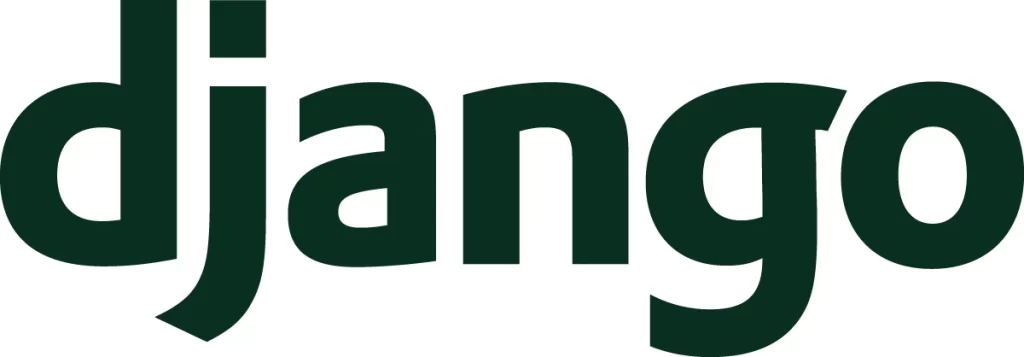
Features: Admin interface, ORM, security built-in
Performance: Excellent for rapid development It’s “batteries-included” philosophy provides everything needed for web applications out of the box.
Django, one of the two top web development frameworks centered around Python, caters to individuals seeking to optimize their product development timelines without compromising on quality. Packed with an extensive array of features, Django is strategically crafted to empower developers to expedite their workflows. Leveraging the inherent efficiency of Python, Django emphasizes component reusability, thereby enabling developers to write less code while achieving rapid application development.
Beyond its timesaving attributes, Django’s popularity extends beyond its association with a widely used programming language. It distinguishes itself by providing a robust set of security features right from the start, bolstering the resilience of applications developed on the platform. Additionally, Django’s scalability is a noteworthy feature, allowing developers to tackle the construction of complex applications within remarkably short timeframes.
Vue.js
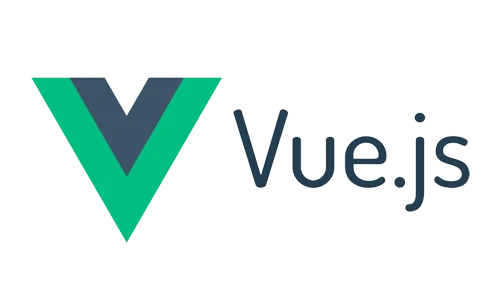
Vue.js is an optimal framework for those individuals that are engaged in the development of single-page applications (SPAs), providing a tailored solution for crafting user interfaces (UI) across a spectrum of web applications. Operating on the Model-View-View-Model (MVVM) architecture, Vue.js is characterized as a lightweight web framework, positioning it as a versatile choice for those seeking efficient and focused UI development.
The framework’s appeal extends beyond its architectural foundation, as it comes equipped with a diverse array of features and tools that collectively empower developers in the comprehensive creation of fully functional user interfaces. Vue.js distinguishes itself as an accessible framework, offering an intuitive learning curve that facilitates seamless integration with third-party tools. This user-friendly aspect not only expedites the development process but also underscores Vue.js as a pragmatic choice for developers looking to effortlessly incorporate additional functionalities and tools into their projects.
Laravel
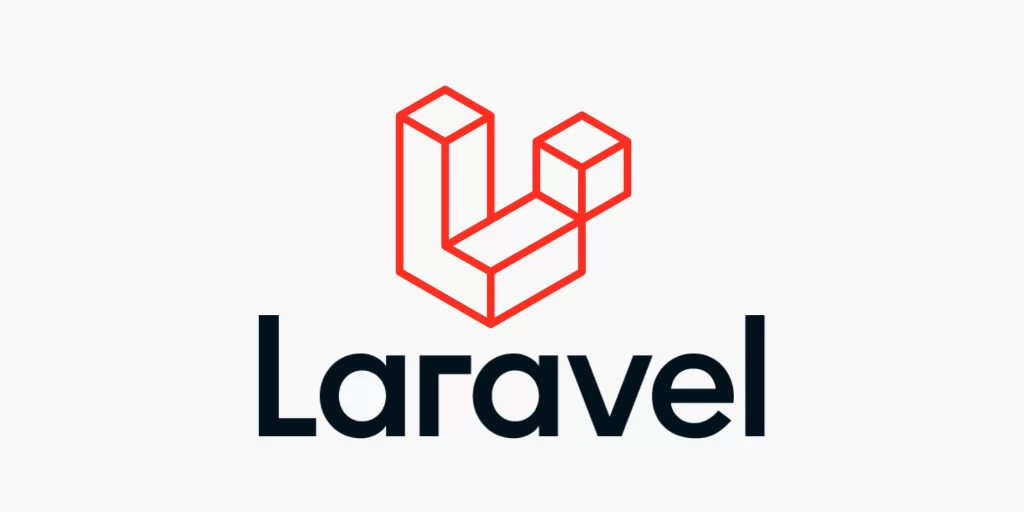
Features: Eloquent ORM, Artisan CLI, extensive ecosystem
Performance: Optimized for developer productivity
Laravel makes PHP development enjoyable with expressive syntax and powerful features. Laravel stands out as the preeminent web development framework within the PHP ecosystem, renowned for its widespread popularity and effectiveness. Engineered with the explicit goal of producing sophisticated websites and web applications, Laravel consistently lives up to this objective. Notably, the framework boasts an expressive syntax that contributes to the creation of code that is not only functional but also aesthetically pleasing.
Originating as a project built on the foundation of Symfony, Laravel has evolved into a robust framework in its own right. Anchored in the Model-View-Controller (MVC) architectural paradigm, it provides developers with a comprehensive toolkit to construct extensive, highly resilient, and feature-laden web applications. The MVC model serves as the scaffolding for Laravel’s development approach, facilitating the organization of code and promoting scalability.
jQuery

For developers in quest of an exemplary open-source framework, jQuery emerges as the optimal choice, specifically tailored for crafting application user interfaces. Its versatility extends to the creation of cross-browser-compatible interfaces, and it is lauded for its straightforward approach. jQuery facilitates seamless interaction between the Document Object Model (DOM) and its syntactical structure, providing developers with a user-friendly and efficient environment for UI development.
What distinguishes jQuery and adds to its prominence is its robust capability to create intricate features such as animations and other visually striking effects during application development. Beyond its inherent prowess, jQuery further solidifies its appeal by being available in compact file sizes, making it a lightweight yet powerful solution. The framework’s adaptability is further augmented by a diverse array of plugins, contributing to its versatility and enabling developers to extend its functionality according to the specific requirements of their projects.
Xamarin

Xamarin is more than a mere web app framework, according to its user base, who often describe it as an immersive development experience. This versatile framework is specifically designed for creating applications across multiple platforms, including Android, iOS, and C#. Renowned for delivering a native-like user experience, Xamarin not only achieves exceptional performance speeds but also incorporates a robust set of features to facilitate the development of highly resilient applications.
Functioning as a leading cross-platform development tool, Xamarin streamlines the development process by enabling developers to work with a single codebase that caters to multiple operating systems. Beyond this, Xamarin provides easy access to native APIs, enhancing the framework’s adaptability and allowing developers to harness platform-specific functionalities seamlessly.
ExpressJS

Express stands out as a remarkable framework within the MEAN (MongoDB, Express.js, AngularJS, Node.js) and MERN (MongoDB, Express.js, React, Node.js) stacks, offering a minimalist and lightweight approach to web development. It holds a pivotal role as the default server framework for Node.js development, earning favor among programmers and software firms alike due to its simplicity and the ability to enhance its functionality through a diverse array of plugins.
Recognized for its high performance, Express has solidified its position as one of the most extensively employed frameworks for both web and mobile applications. Beyond its role in traditional application development, Express excels as a preferred choice for building comprehensive APIs, providing developers with a streamlined and efficient means to create robust and feature-rich application programming interfaces.
Flask

Flask, grounded in Python, emerges as a fitting framework chosen by developers seeking to construct applications that strike a balance between being lightweight, powerful, and scalable, ultimately delivering exceptional performance. Conceived and introduced by Armin Roncher, Flask draws its foundation from the Jinja2 template and Werkzeug WSGI toolkit, providing a robust infrastructure for developers to build upon.
Functioning as a micro-framework, Flask consolidates essential libraries, tools, and technologies required for developing applications from the ground up. This strategic integration allows developers to seamlessly create both single-page and multi-page applications, showcasing the framework’s versatility.
What to Look for When Choosing a Web Development Framework?
There are plenty of things you need to look at while choosing a web development framework. These things are often not known to the beginners, which is why they make mistakes while selecting the framework. If you do not know what these things are, take a look at the factors defined below.
Functionality
When selecting a framework, the primary consideration should be its functionality. Opting for full-stack frameworks may not be advisable, particularly if routing capabilities are a crucial requirement. Instead of choosing a framework solely based on its popularity, it is essential to align your selection with your specific needs.
Open Source Advantage
Another crucial factor to consider is whether your web app development framework is open source. The primary advantage of open-source frameworks lies in the active involvement of numerous contributors in maintaining the code, even though formal support may not be provided.
Support
Primarily, it’s essential to ascertain whether the framework and app development tools you intend to select boasts extensive community support. This stands out as a critical consideration, particularly in the initial planning phase of your project.
How to Choose the Right Framework: Expert Selection Criteria
1. Project Requirements Analysis
Performance needs: Critical for user-facing apps? Choose Svelte, SolidJS, or Astro
Complexity level: Simple sites → Vue, Astro; Complex apps → React, Angular
Content vs. interactivity: Content-heavy → Astro, Next.js; Interactive → React, Vue
2. Team Considerations
Skill level: Beginners → Vue, Svelte; Experienced → React, Angular
Team size: Small teams → Vue, Svelte; Large teams → Angular, React
Hiring needs: React has the largest talent pool
3. Technical Requirements
Mobile development: React (React Native), Flutter for cross-platform
SEO importance: Next.js, Nuxt, SvelteKit for SSR capabilities
Real-time features: Node.js + Socket.io for WebSocket support
4. Ecosystem and Support
Library availability: React > Vue > Angular > Svelte
Community size: React and Vue have largest communities
Long-term support: Angular offers LTS versions
5. Performance Benchmarks
Initial load time: Astro > Svelte > Vue > React > Angular
Bundle size: SolidJS < Svelte < Vue < React < Angular
Runtime performance: SolidJS > Svelte > Vue > React > Angular
Frequently Asked Questions
| What is web development framework? Development frameworks serve as the foundational tools and libraries that developers utilize to structure their applications. Acting as an architectural foundation, these frameworks enable developers to expediently and efficiently construct a diverse array of applications. |
| How many types of web development frameworks are there? Top web development frameworks are classified into two types i.e. frontend and backend framework. Being a developer, it is important for you to have a good knowledge about both categories. |
| Which web development frameworks are more popular in the market? Today, there are different frameworks popular in the development industry. Some of the top name among them includes Angular, React, Node.js. jQuery, Laravel and more others. |
Final Words
The web development frameworks landscape in 2025 offers unprecedented choice and capability. React remains the safe bet for most applications, Vue provides the best developer experience for smaller teams, while Svelte and SolidJS lead in performance optimization. The key is matching your framework choice to your specific context.
Remember: the best framework is the one your team can use effectively to deliver value to your users. Focus on solving real problems rather than chasing the latest trends.
As we move through 2025, frameworks will continue evolving with AI integration, edge computing capabilities, and performance optimizations. Stay informed, but don’t let technology churn distract from building great user experiences.

Empower your digital journey with StruqtIO - Your dedicated partner for cutting-edge custom software development, innovation, and digital transformative solutions. Harness the power of technology to elevate your business and redefine your digital landscape today.
